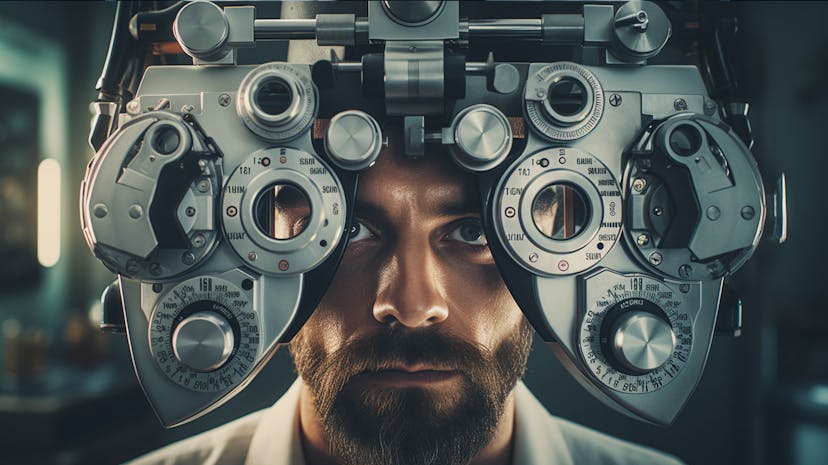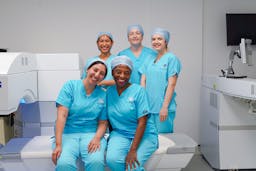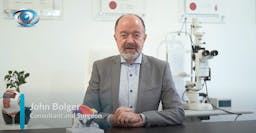
What Are Myopia, Hypermetropia And Astigmatism?
Often people say ‘I am long-sighted’ or ‘short-sighted’, but for a lot of us who don’t wear glasses sometimes it’s difficult to understand what this means. Fancy-long and complicated words like myopia and hypermetropia make this all the more confusing.
Does short-sighted mean you can see things up close or you can’t? What makes a person long-sighted? How can glasses, lenses or laser eye surgery correct this?
What are myopia and hypermetropia, and where does astigmatism come into this?
We at My-iClinic will help you find the answers to these questions in this helpful guide
Myopia, Hypermetropia And Astigmatism!
Short-sightedness or long-sightedness occurs when a person’s lens cannot focus light entering the eye in the right way on the back of the eye, also known as the retina.
Astigmatism is a condition that can exist alone or in combination with one of these other conditions. We’ll look into each of these conditions in more detail.
Myopia (short-sighted)
If you are short-sighted - also known as myopia - you can see things that are up close but can struggle to see things further away.
This is because light entering the eye is focused in front of the retina. When it should focus on the retina, it focuses too soon. This happens for two reasons: either the lens focuses light too strongly or the eye is too ‘long’ meaning the retina is too far away from the lens.
To correct this we give short-sighted people lenses that change (or diverge) the way light enters the eye, so once it is focused by their natural lens it focuses on the right place of the retina.
These types of lenses are called minus, hence why short-sighted people get ‘minus prescriptions’.
What Are The Causes Of Myopia?
The development of myopia can be influenced by several factors:
- Genetics: Myopia tends to run in families. If one or both parents are nearsighted, there is an increased likelihood that their children may also develop myopia.
- Environmental Factors:
- Prolonged Near Work: Spending extended periods of time on activities that require close-up focus, like reading, using computers, or playing video games, may contribute to the development of myopia.
- Lack of Outdoor Time: Studies suggest that spending time outdoors, especially in natural light, may help reduce the risk of developing myopia.
- Age and Growth: Myopia often starts during childhood and can progress as a child grows. The eyeball may grow too long from front to back, causing light to focus in front of the retina rather than directly on it.
- Educational Pressure: High academic demands, especially in cultures that place a strong emphasis on academic achievement, may be associated with a higher incidence of myopia.
- Poor Lighting: Insufficient lighting when reading or performing close-up tasks may strain the eyes and contribute to the development or progression of myopia.
- Certain Diseases and Conditions: Some underlying health conditions, like diabetes, may increase the risk of myopia. Additionally, certain medications may be associated with myopia development.
- Ethnicity: Some ethnic groups have a higher predisposition to myopia. For example, individuals of East Asian descent tend to have higher rates of myopia.
- Premature Birth: Premature babies may have a higher risk of developing myopia due to the incomplete development of the eyes.
- Other Eye Conditions: Conditions like cataracts, glaucoma, or retinal detachment may be associated with an increased risk of myopia.
While these factors can contribute to the development of myopia, the exact cause is not always clear-cut, and it can be influenced by a combination of genetic and environmental factors. Regular eye exams and early detection of myopia are crucial for managing and correcting vision problems.

Hypermetropia (long-sighted)
Long-sightedness (also known as hypermetropia or hyperopia) is when you cannot see things up close. It’s exactly the opposite problem of short-sightedness. This happens when light entering the eye is focused behind the retina; you can think of it as the eye focusing light too late.
This happens when either the eye is too short and the retina is too close to the lens, or when the lens focuses light too weakly.
To correct this we give long-sighted people lenses that converge the light that enters the eye so that once it is focused by their natural lens it focuses on the right place of the retina. These types of lenses are called plus, hence why short-sighted people get plus prescriptions.
What Are The Causes Of Hypermetropia?
Here are the potential causes of hypermetropia:
- Eyeball Length: In hypermetropia, the eyeball is shorter than average from front to back. This results in light focusing behind the retina rather than directly on it.
- Cornea Shape: Sometimes, the cornea (the clear front surface of the eye) may be too flat, causing light to focus behind the retina.
- Age-related Changes: Like presbyopia, hypermetropia can develop or worsen with age. As people get older, the lens of the eye becomes less flexible, making it harder to focus on close objects.
- Genetics: There is a hereditary component to hypermetropia. If parents are hypermetropic, their children may have a higher likelihood of developing it as well.
- Premature Birth: Babies born prematurely or with low birth weight may have a higher risk of developing hypermetropia. This is because their eyes might not have fully developed.
- Certain Health Conditions: Conditions like diabetes can sometimes be associated with hypermetropia.
- Eye Disorders: Some eye conditions or diseases, such as retinopathy or cataracts, may be linked to hypermetropia.
- Medications: Certain medications, particularly those that affect the eyes or vision, may contribute to hypermetropia.
Hypermetropia is a common refractive error, and it can be corrected with eyeglasses, contact lenses, or refractive surgery. If you suspect you have hypermetropia or any vision problem, it's crucial to consult an eye care professional for a thorough examination and appropriate correction.

How Can You Fix Myopia & Hypermetropia?
Here are some options:
- Eyeglasses: Prescription glasses with lenses that are specifically designed to correct myopia can provide clear vision. They should be worn as advised by your eye care professional.
- Contact Lenses: Soft or rigid gas-permeable contact lenses can be used to correct myopia. They provide a clear field of vision without the need for glasses.
- Refractive Surgery:
- LASIK (Laser-Assisted In Situ Keratomileusis): This surgery reshapes the cornea using a laser to correct refractive errors, including myopia.
- PRK (Photorefractive Keratectomy): Similar to LASIK, but without creating a flap on the cornea. It is often recommended for individuals with thinner corneas.
- SMILE (Small Incision Lenticule Extraction): A minimally invasive form of refractive surgery that removes a small piece of tissue from the cornea to correct vision.
- Orthokeratology (Ortho-K): This involves wearing specially designed gas-permeable contact lenses overnight. They reshape the cornea temporarily, providing clear vision during the day.
- Multifocal Lenses: These specialized lenses have different zones for near and distance vision correction. They can be used for individuals with myopia and presbyopia.
- Atropine Eye Drops: In some cases, specially formulated atropine eye drops may be prescribed to slow down the progression of myopia in children. However, this is still an area of ongoing research.
- Bifocal or Progressive Eyeglasses: These lenses have different zones for near and distance vision correction. They can be used for individuals with myopia and presbyopia.
- Behavioural Changes:
- Take Breaks from Close Work: If you spend a lot of time reading or using screens, take regular breaks to rest your eyes.
- Spend Time Outdoors: Spending time in natural light has been associated with a reduced risk of myopia development in children.
- Maintain a Healthy Diet: A diet rich in nutrients like vitamin A, vitamin C, and omega-3 fatty acids may support overall eye health.
It's important to consult with an eye care professional to determine the best course of action for your specific situation. They can provide a comprehensive eye exam and recommend the most suitable treatment option for your myopia.
Astigmatism
Another term that we hear quite often when talking about disorders of the eye is astigmatism. It is caused by abnormalities in the cornea and the lens.
Astigmatism can be described as the condition when the front of the eye is not a perfect round shape like a football, instead, it is more oval like a rugby ball. This gives the front of the eye an asymmetric curvature so light scatters as it goes into the eye.
This produces a jagged and slightly distorted image.
Some people are unlucky enough to have a combination of short or long-sightedness and astigmatism. This is usually known as either myopic or hypermetropic astigmatism.
Luckily myopia and hypermetropia don’t often happen together. But some people when getting older may get one eye short-sighted and another one long-sighted. Optometrists may leave these patients with uncorrected vision if they feel comfortable and would find glasses an inconvenience.
What Are The Causes Of Astigmatism?
Here are the potential causes of astigmatism:
- Corneal Shape Irregularities: The cornea is the clear, front part of the eye responsible for refracting light. In astigmatism, the cornea is not perfectly spherical but instead has an irregular shape. It may be more curved in one direction than the other.
- Lenticular Astigmatism: This type of astigmatism is caused by an irregularity in the lens of the eye, rather than the cornea. It can occur due to changes in the lens shape or structure.
- Genetics: Astigmatism tends to run in families. If one or both parents have astigmatism, there is an increased likelihood that their children may also develop it.
- Eye Injuries or Surgery: Trauma to the eye, such as injuries or surgeries, can alter the shape of the cornea or lens and lead to astigmatism.
- Keratoconus: This is a progressive eye condition in which the cornea gradually thins and bulges outward into a cone shape. It can result in astigmatism among other vision problems.
- Scarring of the Cornea: Scarring from infections, injuries, or other eye conditions can cause irregularities in the cornea, leading to astigmatism.
- Certain Eye Conditions: Conditions like pterygium (a growth on the eye's surface) and keratitis (inflammation of the cornea) can lead to astigmatism.
- Age-related Changes: In some cases, astigmatism can develop or change with age, although this is less common than with conditions like hypermetropia or presbyopia.
- Use of Hard Contact Lenses: Prolonged use of rigid or hard contact lenses may contribute to the development of astigmatism.
Astigmatism is a common refractive error, and it can be corrected with eyeglasses, contact lenses, or refractive surgery. If you suspect you have astigmatism or any vision problem, it's crucial to consult an eye care professional for a thorough examination and appropriate correction.

World-class myopia, hypermetropia and astigmatism treatment at My-iClinic
Fortunately, the wonders of modern medicine and technology mean there are many amazing ways to correct long or short-sightedness! Glasses can be a low-cost and even stylish solution and contact lenses, although not always ideal, can be a practical one.
But there are even more exciting and amazing ways that vision correction can be done now.
At My-iClinic our specialists are experts in two types of procedures that can cure astigmatism, myopia and hypermetropia: laser eye surgery or refractive lens exchange.
If you’re interested in learning more, contact us today or book a consultation with one of our expert ophthalmologists.

Find out more by Speaking to our team
You may also like








